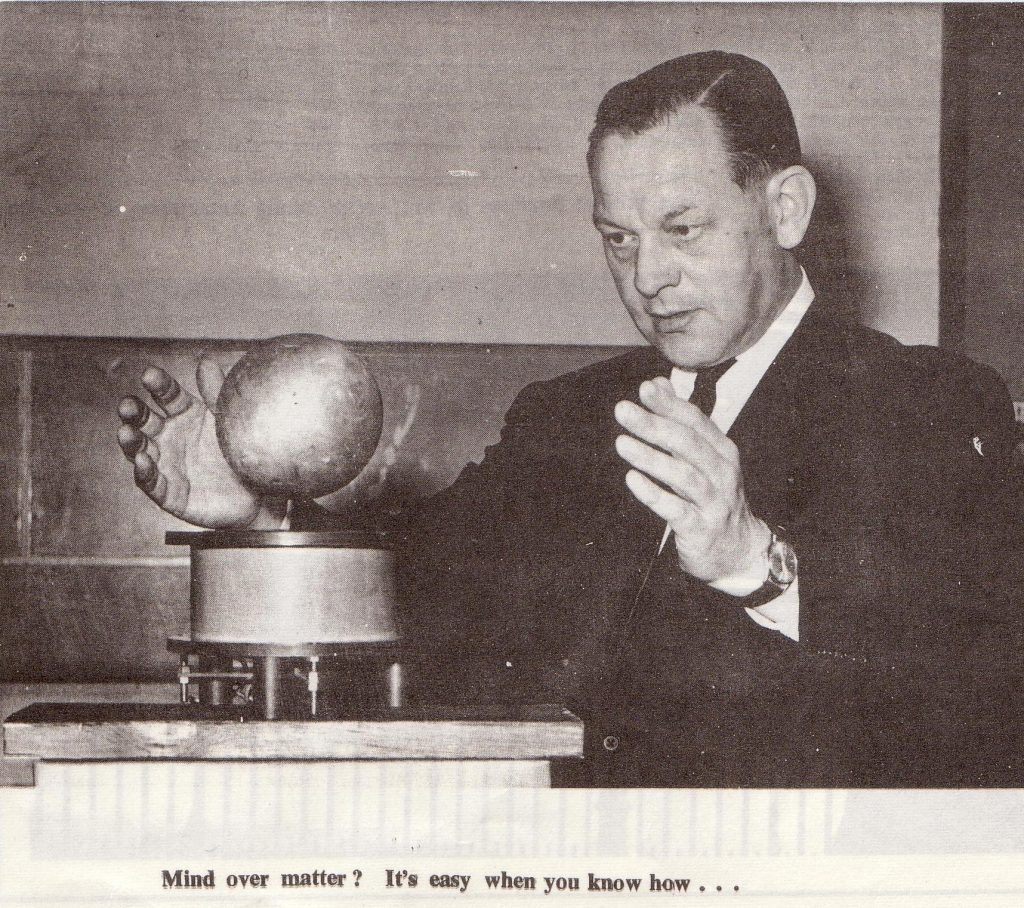Four years ago, I came across a Doctor Who script from 1966 in the archives of Imperial College London, penned by their eccentric former Professor of Heavy Electrical Engineering, Eric Laithwaite.
At the time, I thought it was an interesting curiosity, but not much more. After alluding to the script in a talk I gave on Laithwaite at the Science Museum, a colleague put me in touch with author and radio producer Simon Guerrier, who writes for the official Doctor Who Magazine.
https://twitter.com/natashamcenroe/status/979029473491345408
‘I knew there wasn’t a Doctor Who TV story by Laithwaite,’ Simon recalls his initial reaction. ‘Knowing he had been interviewed for but missed out on the job of Doctor Who’s scientific adviser in 1966, I thought Rupert must be wrong! But no, very excitingly, he’d seen the script himself!’
By the late 1960s, Eric Laithwaite was at the height of his public fame, regularly appearing on television, including the 1964 Horizon Christmas special. He was best known for his linear motor and its application to new forms of hovertrain transport, later becoming the so-called ‘father’ of Maglev.

Laithwaite was also a keen supporter of the Science Museum, donating his early prototypes, presenting a BBC programme on the (former) electrical engineering gallery, and designing a linear-motor mobius strip demonstration for the old mathematics gallery.

When Simon came to see me at the museum, I was delighted he was interested in the script and that he wanted to research it further for a piece in Doctor Who Magazine (as a fan of the series, it was a proud moment to see my name in its pages).
Simon was able to provide some additional context. In the first weeks of 1966 Laithwaite was invited to meet Doctor Who story editor Gerry Davis, who was looking for a scientific advisor for the show. The candidates included Patrick Moore (presenter of The Sky at Night), Alex Comfort (later author of The Joy of Sex) and ophthalmologist Kit Pedler.
Pedler got the job and he and Davis went on to create the Cybermen.
It was following this interview that Laithwaite wrote a script called ‘A New Dalek Adventure’.

In Laithwaite’s script, the Doctor and his two companions, Stephen and Dodo, are faced with what at first appears to be Daleks yet, as they soon discover, are in fact a new entity that can rearrange its atoms to whatever form they like. In doing so, they have wiped out the Daleks for good.
Laithwaite’s script is dialogue-driven, exploring philosophical ideas such as good and evil and collective thought through the idea of a being that can manipulate atoms in time and space.
Laithwaite sent the script to the BBC, but without success.
Yet, as Simon uncovered, Laithwaite’s encounter with Doctor Who inspired his Christmas Lectures – the famous series for schoolchildren dating back to 1825 – for the Royal Institution later that same year.

Laithwaite’s 1966 series, ‘An Engineer in Wonderland’, was the first to be televised in their entirety, a decision made by David Attenborough when he was controller of BBC2.
Laithwaite’s Christmas Series was the first series that took engineering as its subject. He explored it from many angles, using Lewis Carroll’s Alice’s Adventures in Wonderland as his thematic hook.
Simon learnt that Laithwaite explored the central idea of his Doctor Who script – about the way we perceive dimensions and the limits of our perspective – further in his Christmas Lectures.

Doctor Who even gets a mention in the first lecture, as well as in his lecture notes, the preview Laithwaite wrote for listings magazine Radio Times, and the book version he wrote afterwards.
Later gaining a reputation for outlandish ideas, Laithwaite’s Doctor Who script is testament to his imaginative approach to scientific thinking.
‘It’s a fascinating story and completely new to me,’ says Simon, ‘as well as to the Doctor Who experts I consulted while writing up the feature. Given what we now know, I think Laithwaite might even have inspired a character in one of the TV stories from the time, one that involved the Daleks!’
Read more about Laithwaite’s script and his Christmas Lectures in Doctor Who Magazine issue #356 is published on 7 March 2019. Find out more.
The Royal Institution is appealing to the public for televised Christmas Lecture, including Laithwaite’s 1966 series, which have been lost. Find out more.
